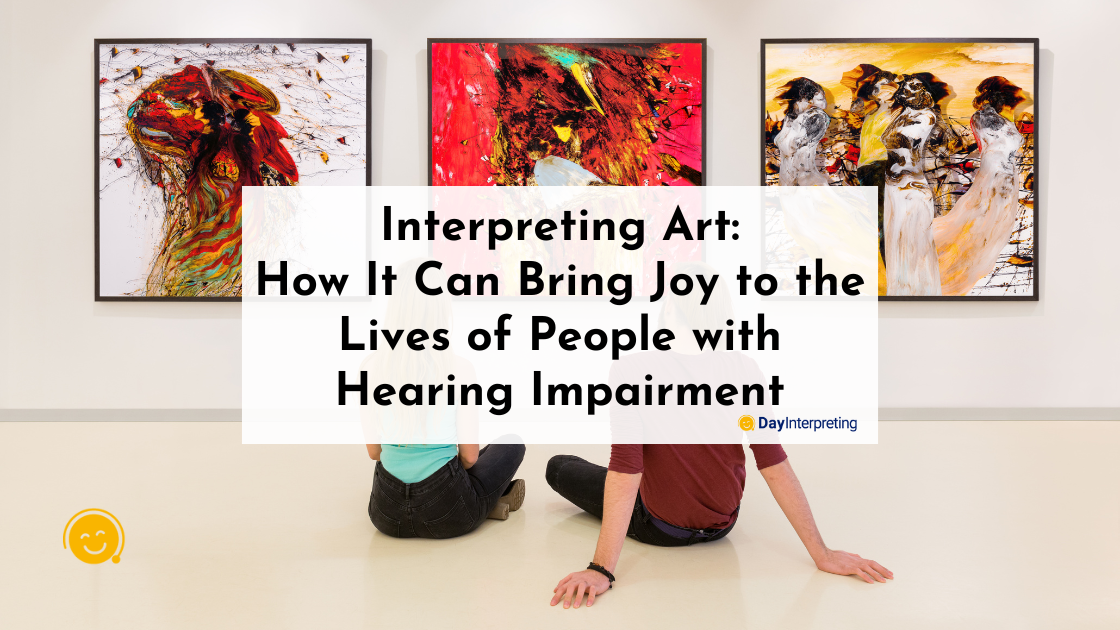For people with hearing impairments, access to art can be difficult. Without being able to hear music, watch a movie, or understand a conversation, they can feel isolated from the joys of art. Fortunately, there are ways of interpreting art that can make it accessible to those with hearing impairments, allowing them to find joy in the same ways as their hearing peers.
This blog post will explore how interpreting art can bring joy to the lives of people with hearing impairments.
The Importance of Art
Art is an important part of any person’s life, allowing them to express themselves and their feelings creatively It can be especially significant for people with hearing impairment as it gives them a unique way to connect with the world around them. For those who have difficulty communicating through spoken language, art can provide a way to bridge the gap between them and the rest of society.
The need for accessible art for people with hearing impairments is growing. Art is increasingly being used as a therapeutic tool for people with hearing impairments, but the process of creating art often requires the use of interpreting services. Interpreting services bridge the gap between the artist and their audience, providing a more accessible form of communication and understanding. This can help the hearing impaired express themselves better and gain more from the therapeutic benefits of art.
When We Interpret Art, We Make it More Accessible for the Hearing Impaired
Making contemporary art accessible for people with hearing impairments is an important part of making art more inclusive. While there are many methods of making art more accessible, the most effective way to do so is by utilizing art interpreters and interpreting services at art galleries. Art interpreters are specially trained to translate visual elements of art into a form that can be understood by those who have hearing impairments. Interpreting services can be utilized to make verbal information such as audio tours, speeches, and lectures, available to those with hearing impairments. In essence, this unique approach to explaining the artist’s work to those with hearing impairments is an art form in itself.
The Relationship Between Art and Emotion
Similar to music, the connection between art and emotion is undeniable. And it’s not a connection reserved solely for the art lover. Art has a powerful way of conveying feelings that are difficult to express in words. It also has the ability to evoke an emotional response in people that helps them to process their own experiences and feelings. This is especially true for those with hearing impairments, who may have difficulty expressing themselves verbally. By experiencing art, those with hearing impairments can experience joy and comfort, providing a necessary form of emotional release.
The Benefits of Interpreting Art
Interpreting services for the hearing impaired can help bridge the gap between them and the world of art. An art interpreter is a specialist that uses their skills to translate the visual and physical elements of art into a form that can be understood by the deaf or hard of hearing. This allows people with hearing impairments to experience the joy of art, engage in artistic expression, and participate in events that they otherwise wouldn’t be able to. It’s a way for them to understand the artist’s intentions within the context and also broaden their own knowledge.
Art interpreters provide invaluable support at artistic conventions to those with hearing impairments. By explaining the details of works of art with acceptable interpretations, they help people to understand the narrative, symbolism, and visual elements of art. As well as aiding in understanding, art interpreters also provide emotional support. They can use their knowledge of both the art and the person to find ways to connect and interact with the art that resonates with the individual.
Interpreting services also allow people with hearing impairments to attend events and activities that feature artwork from various artists, such as galleries and performances. Art interpretation experts can explain an event’s context and ensure that the experience is enjoyable for everyone. They can also create a more inclusive environment by helping everyone understand the artwork being displayed better.
Final Thoughts on Interpreting Art
The use of art interpreters gives people with hearing impairments the opportunity to express themselves creatively and to find joy in the artwork around them. By bridging the gap between art and hearing impairments, interpretation specialists give people the chance to engage with and appreciate the work of other artists in a meaningful way.





0 Comments